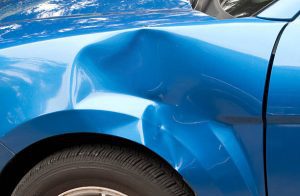Protecting Your Car’s Paint from Scratches


Protecting Your Car’s Paint from Scratches


Introduction
The paint on your car not only adds to its aesthetic appeal but also acts as a protective barrier against the elements. Unfortunately, the paint can be susceptible to scratches, which can dull its shine and decrease the value of your vehicle. However, with the right precautions and maintenance, you can protect your car’s paint from scratches and keep it looking pristine for years to come. In this article, we will provide you with a step-by-step guide on how to effectively protect your car’s paint from scratches.
Step 1: Park Carefully
One of the simplest yet most effective ways to prevent scratches on your car’s paint is to park carefully. Follow these guidelines:
Choose Safe Parking Spots
Whenever possible, park in areas that are safe and less prone to scratches. Look for spots away from high-traffic areas, trees, and bushes, as these can increase the risk of scratches from passing vehicles, branches, or twigs.
Avoid Tight Parking Spaces
If you’re parking in a parking lot, choose a space with ample room on both sides to avoid accidental door dings or scratches from neighboring vehicles.
Use Parking Aids
Utilize parking aids, such as parking sensors or backup cameras, to help you navigate into parking spaces without scraping against obstacles.
Step 2: Wash Your Car Properly
Regularly washing your car not only keeps it looking clean but also helps protect the paint from scratches. Follow these steps for a proper car wash:
Use the Right Tools
Gather the necessary tools for washing your car, including a soft sponge or microfiber wash mitt, a pH-neutral car wash soap, and a bucket of clean water.
Rinse the Car
Start by rinsing the car with water to remove any loose dirt or debris that could scratch the paint during the washing process.
Wash the Car
Fill a bucket with water and add the recommended amount of car wash soap. Dip the sponge or wash mitt into the soapy water and gently wash one section of the car at a time, starting from the top and working your way down. Be sure to rinse the sponge or mitt frequently to prevent dirt buildup.
Rinse and Dry
After washing, thoroughly rinse the car with clean water to remove all soap residue. Finally, dry the car using a soft microfiber towel or a chamois to prevent water spots.
Step 3: Apply a Protective Wax or Sealant
Applying a protective wax or sealant is an excellent way to add an extra layer of defense to your car’s paint. Follow these steps:
Clean the Car
Before applying any wax or sealant, ensure that your car is clean and dry. Remove any dirt, dust, or residue that could interfere with the bonding of the protective product.
Choose the Right Product
Select a high-quality car wax or sealant that suits your needs. Look for products specifically designed to protect against scratches and provide long-lasting shine.
Apply the Product
Follow the instructions on the product’s label for application guidelines. Typically, you’ll need to apply a small amount of wax or sealant to a clean, dry applicator pad and spread it evenly over the painted surfaces using circular motions. Allow the product to dry to a haze, then buff it off with a clean, soft cloth.
Step 4: Use Paint Protection Film
For maximum protection against scratches, consider applying paint protection film (PPF) to vulnerable areas of your car. PPF is a transparent, self-healing film that adheres to the paint surface, creating a barrier against scratches and stone chips. Here’s how to apply PPF:
Clean the Surface
Thoroughly clean the areas where you’ll be applying the PPF. Remove any dirt, wax, or contaminants that could affect adhesion.
Measure and Cut the Film
Measure the desired area and use a sharp utility knife or scissors to cut the PPF to the appropriate size and shape. Leave a small overlap for easier installation.
Apply the Film
Peel back a portion of the backing from the PPF and carefully align it with the target area. Gradually peel off the backing while applying the film to the surface, using a squeegee or similar tool to smooth out any air bubbles or wrinkles.
Trim and Finish
Once the film is applied, use a sharp knife to trim any excess material. Apply heat from a heat gun or hairdryer to help the film conform to curved surfaces. Finally, use the squeegee to ensure proper adhesion.
Step 5: Avoid Abrasive Materials and Techniques
When it comes to maintaining your car’s paint, it’s essential to avoid using abrasive materials or techniques that can cause scratches. Follow these guidelines:
Choose Soft Cleaning Tools
Use soft microfiber cloths or applicator pads for cleaning and drying your car. Avoid rough materials like abrasive sponges or brushes that can scratch the paint.
Avoid Automatic Car Washes
Automatic car washes that use brushes or harsh chemicals can potentially scratch the paint. Opt for handwashing or touchless car washes instead.
Be Gentle During Cleaning
When cleaning your car, use gentle motions and avoid applying excessive pressure. Instead of rubbing or scrubbing, opt for gentle wiping or patting motions to minimize the risk of scratches.
Remove Debris Safely
If you notice any dirt, bird droppings, or other debris on your car’s paint, remove it promptly and carefully. Use a gentle spray of water or a specialized detailing spray to loosen the debris before wiping it away with a microfiber cloth.
Conclusion
Protecting your car’s paint from scratches is crucial to maintain its appearance and value. By following the step-by-step guide provided in this article, you can effectively prevent scratches and keep your car’s paint looking pristine. Remember to park carefully, wash your car properly, apply a protective wax or sealant, consider paint protection film for vulnerable areas, and avoid abrasive materials and techniques. With these precautions and regular maintenance, you can enjoy a scratch-free and glossy finish for your vehicle for years to come.








